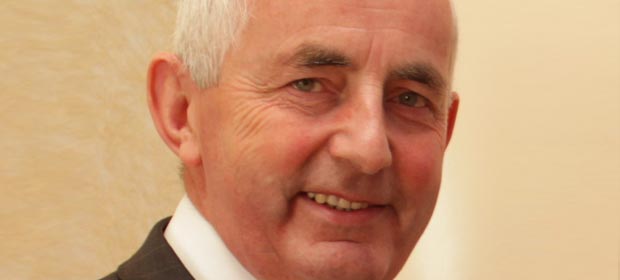I am impressed with the level of engagement on the ‘Croke Park’ deal, with the pace of changes, with the response of staff, with the many millions in savings achieved to-date and then with the enormity of the further agenda being taken on with confidence, writes Pat Harvey.
I am in fact very impressed with the Public Service Agreement and, in particular, with the level of genuine engagement by all parties to make it work to best advantage. The Agreement offers an unprecedented platform to facilitate change on a scale and in a fashion that previously has never existed.

On my appointment as Independent Chairman of the Health Sector Implementation Body the Unions very clearly said to me (paraphrasing) …’we have a deal, we are up for it…let management say what they have in mind, make explicit all the implications for staff, and savings, allow us a chance to meaningfully engage in a discussion, a chance to indeed refine and even further enhance the plan and we will get on with it. The mechanisms are there to deal with HR issues and they can be triggered very rapidly, we don’t want delays!’
Management for their part were equally keen to embrace this new opportunity. They quickly acknowledged that this opportunity had to be operationalised and ‘internalised’ as a way of working throughout the width and breadth of the health system. This would demand very deliberate attention to getting the message on this way of working out to all levels.
They will however bring about very real improvements in outcomes and patient experiences, reductions in mortality, reductions in inappropriate and other resource usage, more appropriate service settings for patients and significant cost savings
Management have set out their stall in the Health Sector Action Plan, a relatively high level document which is being translated and given practical expression in the national/central and regional service plans. These plans are being accompanied by reporting templates.
This Action Plan is very extensive and covers a huge range. Any one theme / element often equating in scale and complexity to substantial sectors in other parts of the public service! The plans to reconfigure and reshape the way acute hospital services are provided on the ground are ambitious, but very exciting. They demand practice changes by everyone involved. They will however bring about very real improvements in outcomes and patient experiences, reductions in mortality, reductions in inappropriate and other resource usage, more appropriate service settings for patients and significant cost savings. There will be extensive evidence of these improvements apparent, over time, to patients in the chronic illness groups, diabetics, those with respiratory or cardio-vascular difficulties and other chronic illness groups where most (c. 80 per cent) of spend takes place.
Over 2000 staff left in a matter of weeks and the challenging void created by their absence was handled largely without fuss
A similar type story can be told for the mental health, disability, older people and children’s services. Back office services will be experiencing very significant changes with centralised shared services in recruitment, medical card on line application/processing facilities and such like causing significant staff disruption, relocation and such like. But plans are advancing very well.
All of these plans, and many more, will be very demanding on staff and in turn the representative organisations. They will be demanding on management to progress them to best and most timely effect. The mantra being espoused and accepted by all at the Implementation Body meetings is ‘PACE & PRODUCT’ ….avoidance of any semblance of just engaging in a process!
Are we making real progress? Without question! One has only to look at what is in hand and indeed already achieved. The recent Management/Administration/Support Staff ‘exit package’ where over 2000 staff left in a matter of weeks, and the challenging void created by their absence, was handled largely without fuss despite the many real difficulties inevitably inherent in the scheme. The entire Community Welfare Service (c. 1400 Staff) was moved to the Department of Social Protection in December 2010. Medical laboratory revised rosters and plans to dramatically reconfigure the service were introduced, milestone deliverables have been achieved and progress is very impressive. There are very substantial reductions being achieved in Agency costs (over €40m in this initiative alone) and shared service plans are on target and full commissioning is imminent. New rosters for cohorts of staff, clinical, nursing and support, throughout the system are either implemented or plans are well advanced for their implementation. And, in all this, I am only touching the surface.
Croke Park is about ‘Pace & Product’ – and not about endless engagement in process!
Bear in mind also that this is against a backdrop of a staffing moratorium and substantial budget reduction which are being handled throughout the system in every possible setting with relative goodwill – no one is eager for these challenges but staff, managers and unions are all obviously working productively to deal with the situation.
So, yes I am impressed! I am impressed with the level of engagement, with the pace of changes, with the response of staff, with the several hundred millions in savings in hand to-date and then with the enormity of the further agenda being taken on with confidence. The health sector is up for the Agreement! Indeed compliments have to be extended to all involved who, out of a real sense of loyalty and dedication to this service, are on track to achieve so much.
Pat Harvey is Independent Chair of the Health Sector Implementation Body – Public Service Agreement [‘Croke Park Agreement’]

